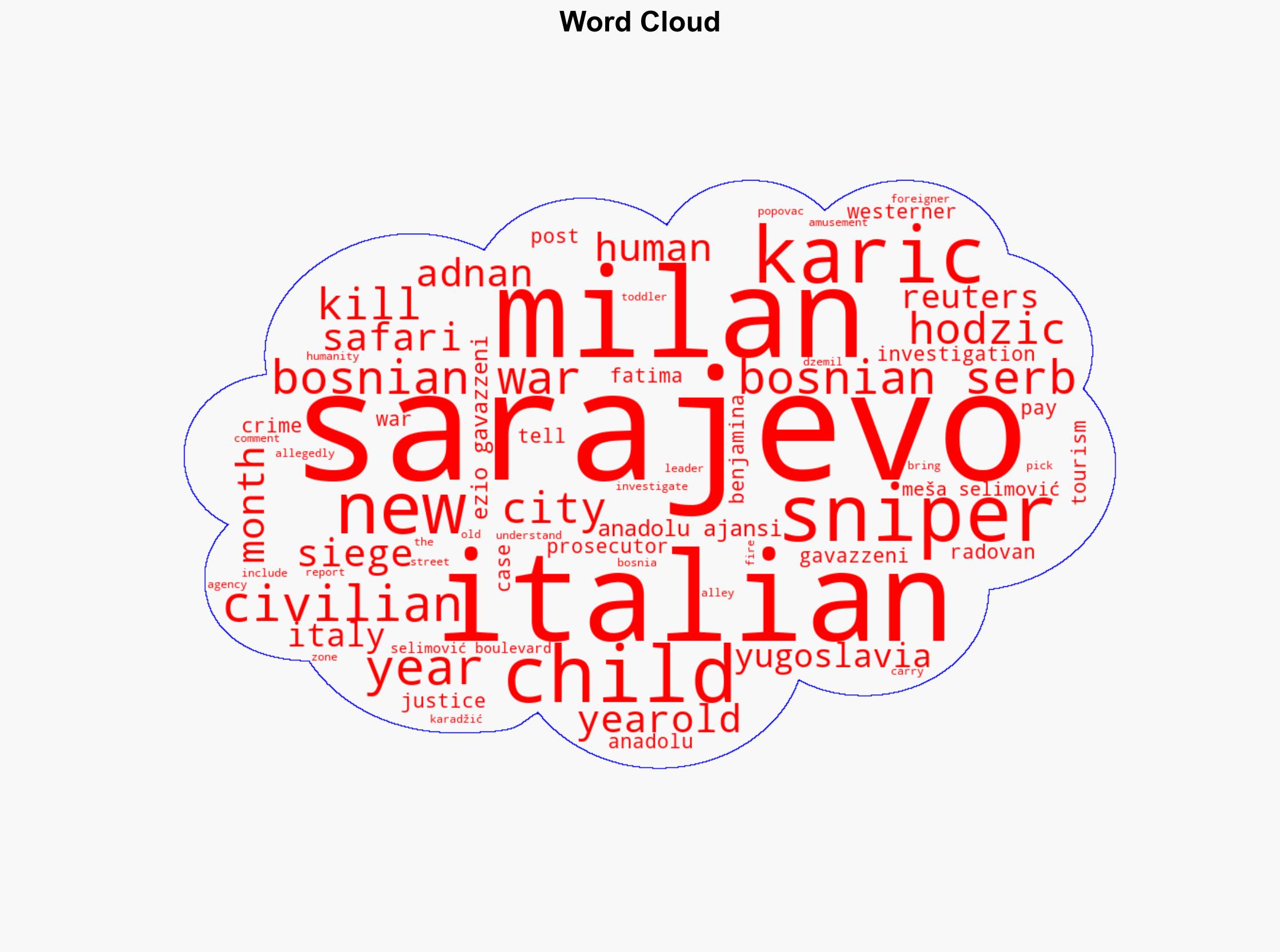Sarajevo siege survivors call for justice over sniper tourism I cannot understand how someone could kill a child for amusement – New York Post
Published on: 2025-11-19
AI-powered OSINT brief from verified open sources. Automated NLP signal extraction with human verification. See our Methodology and Why WorldWideWatchers.
Intelligence Report:
1. BLUF (Bottom Line Up Front)
There is a moderate confidence level that the allegations of “sniper tourism” during the Sarajevo siege are credible and warrant further investigation. The most supported hypothesis is that such activities did occur, facilitated by Bosnian Serb forces, and involved foreign nationals. Recommended actions include supporting international investigations and ensuring justice for victims to prevent similar future occurrences.
2. Competing Hypotheses
Hypothesis 1: “Sniper tourism” was a real phenomenon during the Sarajevo siege, where foreign nationals paid to participate in sniper activities against civilians, including children.
Hypothesis 2: The allegations of “sniper tourism” are exaggerated or fabricated, possibly as a means of political manipulation or misinformation.
Hypothesis 1 is more likely due to the consistency of reports from multiple sources, including survivors and journalists, and the initiation of legal investigations by credible entities. Hypothesis 2 lacks substantial evidence and appears less plausible given the historical context and documented war crimes.
3. Key Assumptions and Red Flags
Assumptions include the reliability of survivor testimonies and the integrity of ongoing investigations. A red flag is the potential for political bias influencing narratives. Deception indicators could involve misinformation campaigns by parties interested in deflecting blame or obscuring historical facts.
4. Implications and Strategic Risks
Failure to address these allegations could undermine international justice systems and embolden future war crimes. Politically, unresolved issues may strain Bosnia and Herzegovina’s relations with implicated countries. Economically, reputational damage could affect tourism and foreign investments. Informationally, misinformation could polarize public opinion and hinder reconciliation efforts.
5. Recommendations and Outlook
- Support international legal investigations to ensure accountability and justice for victims.
- Enhance monitoring of misinformation to prevent escalation of tensions.
- Best-case scenario: Successful prosecution of perpetrators, leading to justice and reconciliation.
- Worst-case scenario: Allegations are dismissed or unresolved, leading to increased regional tensions and distrust in international justice.
- Most-likely scenario: Ongoing investigations yield mixed results, with some accountability achieved but lingering tensions.
6. Key Individuals and Entities
Fatima Popovac, Ezio Gavazzeni, Dzemil Hodzic, Radovan Karadžić, Benjamina Karic.
7. Thematic Tags
Structured Analytic Techniques Applied
- Cognitive Bias Stress Test: Expose and correct potential biases in assessments through red-teaming and structured challenge.
- Bayesian Scenario Modeling: Use probabilistic forecasting for conflict trajectories or escalation likelihood.
- Network Influence Mapping: Map relationships between state and non-state actors for impact estimation.
Explore more:
National Security Threats Briefs ·
Daily Summary ·
Support us





